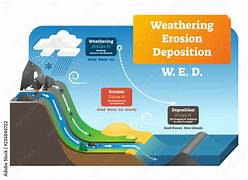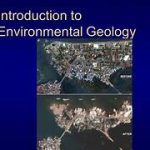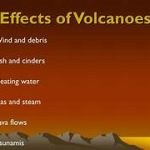Analyzing Contaminant Dispersal Through Deposition and Erosion
Introduction
The dispersal of contaminants through deposition and erosion is a critical environmental issue that affects soil, water, and air quality. Human activities such as industrial emissions, mining, deforestation, and agricultural runoff contribute to contaminant movement across ecosystems. Understanding how contaminants spread via natural geological processes like erosion and deposition is essential for managing pollution, protecting public health, and preserving ecological balance.
This article explores how contaminants are transported through erosion and deposition, the key factors influencing dispersal, the environmental and health impacts, and strategies for mitigation.
1. Understanding Erosion and Deposition
a) What is Erosion?
Erosion is the process by which soil, rock, and other materials are broken down and transported by natural forces such as wind, water, and ice. Erosion plays a vital role in shaping landscapes but can also lead to the movement of harmful contaminants.
Types of Erosion:
- Water Erosion: Rain, rivers, and ocean currents transport sediment and pollutants.
- Wind Erosion: Strong winds carry dust and airborne contaminants over long distances.
- Glacial Erosion: Moving ice sheets grind and redistribute materials.
- Gravity-Induced Erosion (Mass Wasting): Landslides and mudflows shift contaminated sediments.
b) What is Deposition?
Deposition is the process where eroded materials settle and accumulate in a new location. While deposition can remove contaminants from one environment, it can also introduce pollutants into ecosystems such as wetlands, lakes, and agricultural lands.
2. How Contaminants Disperse Through Erosion and Deposition
Contaminants from various sources—including industrial waste, pesticides, heavy metals, and plastics—can be carried by eroded materials and redeposited elsewhere. The extent of dispersal depends on the type of contaminant, environmental conditions, and the medium of transport.
a) Water as a Transport Medium
Water is a powerful force in contaminant dispersal, particularly in:
- Rivers and Streams: Runoff from factories, farms, and urban areas carries chemicals, heavy metals, and fertilizers. These pollutants can travel downstream and settle in riverbeds, lakes, and coastal zones.
- Floods: Floodwaters redistribute contaminants over large areas, affecting soil fertility and groundwater quality.
- Groundwater Movement: Contaminants dissolved in water infiltrate soil layers and enter aquifers, spreading pollution underground.
b) Wind as a Transport Medium
Fine particles of contaminated dust can travel long distances through wind erosion.
- Desertification and Deforestation: Without vegetation to hold the soil, wind picks up toxic dust and transports it across regions.
- Industrial Emissions: Factories release pollutants that attach to airborne particles, leading to acid rain and respiratory problems in distant communities.
- Volcanic Eruptions and Wildfires: These events inject heavy metals, ash, and other pollutants into the atmosphere, which later settle through deposition.
c) Soil and Sediment as Carriers of Contaminants
Contaminated sediments carried by erosion can pollute:
- Agricultural Lands: Pesticides and fertilizers transported by erosion affect crop quality and water supplies.
- Wetlands and Coastal Areas: These ecosystems trap pollutants, affecting aquatic life and biodiversity.
- Urban and Industrial Zones: Heavy metals and oil residues accumulate in eroded sediments, increasing toxicity in city environments.
3. Key Factors Influencing Contaminant Dispersal
The spread of contaminants through erosion and deposition is influenced by several factors:
a) Climate and Weather Conditions
- Heavy Rainfall: Increases water erosion and runoff, spreading contaminants into rivers and lakes.
- Drought: Leads to wind erosion, lifting contaminated dust into the air.
- Storm Events: Hurricanes and typhoons can cause widespread contaminant dispersal through flooding and wind erosion.
b) Land Use and Human Activities
- Deforestation: Removes vegetation that holds soil, increasing erosion and contaminant movement.
- Agriculture: Excess fertilizers and pesticides contribute to nutrient runoff and groundwater contamination.
- Mining and Industrial Sites: These areas release heavy metals and toxic chemicals that disperse through wind and water erosion.
c) Soil Composition and Topography
- Sandy Soils: More prone to erosion, leading to faster contaminant dispersal.
- Clay Soils: Retain contaminants longer but can still be transported through water erosion.
- Slope and Elevation: Steep landscapes experience more runoff, increasing contaminant transport.
4. Environmental and Health Impacts of Contaminant Dispersal
The movement of contaminants through erosion and deposition has severe consequences for ecosystems, human health, and economies.
a) Impact on Water Quality
- Algal Blooms: Excess nutrients from fertilizers lead to toxic algal growth in lakes and rivers.
- Heavy Metal Poisoning: Mercury and lead from mining sites contaminate drinking water sources.
- Microplastics: Plastic particles eroded from landfills and urban waste enter oceans, harming marine life.
b) Impact on Soil and Agriculture
- Loss of Soil Fertility: Erosion depletes essential nutrients, reducing agricultural productivity.
- Toxic Crop Contamination: Pesticides and industrial chemicals in eroded sediments accumulate in food crops.
- Desertification: Long-term erosion leads to barren, unproductive lands.
c) Impact on Air Quality and Human Health
- Respiratory Diseases: Dust storms carrying pollutants lead to asthma, lung infections, and cardiovascular diseases.
- Carcinogenic Exposure: Airborne contaminants from industrial sites increase cancer risks.
- Infectious Diseases: Contaminated floodwaters spread bacteria and viruses.
5. Strategies for Mitigating Contaminant Dispersal
Effective management of contaminant dispersal through erosion and deposition requires a combination of policies, technology, and conservation efforts.
a) Soil and Land Management
- Reforestation and Afforestation: Planting trees stabilizes soil and prevents erosion.
- Terracing and Contour Farming: Reduces runoff and soil loss in agricultural areas.
- Cover Crops: Protect soil from wind and water erosion.
b) Water Protection Measures
- Wetland Restoration: Wetlands act as natural filters for contaminants.
- Sediment Traps and Retention Ponds: Capture pollutants before they enter waterways.
- Regulating Industrial Waste Disposal: Strict enforcement of environmental laws prevents chemical discharge into rivers.
c) Air Pollution Control
- Reducing Industrial Emissions: Installing filters in factories minimizes airborne contaminant release.
- Dust Suppression Techniques: Using water sprays or vegetation cover prevents wind erosion in dry areas.
- Urban Green Spaces: Parks and trees reduce air pollution in cities.
d) Sustainable Waste Management
- Recycling and Proper Disposal of Chemicals: Prevents hazardous substances from entering the environment.
- Reducing Plastic Waste: Limits microplastic contamination in soil and water.
- Promoting Circular Economy: Encouraging sustainable production and consumption minimizes waste generation.
Conclusion
The dispersal of contaminants through erosion and deposition is a complex issue that affects water, soil, air quality, and human health. Natural processes such as wind and water erosion, combined with human activities like deforestation, mining, and industrial emissions, accelerate the spread of pollutants.
Understanding the mechanisms of contaminant movement allows scientists, policymakers, and communities to develop effective strategies to mitigate pollution. By implementing sustainable land management practices, protecting water resources, and enforcing stricter environmental regulations, we can minimize the harmful effects of contaminant dispersal and ensure a healthier environment for future generations.


